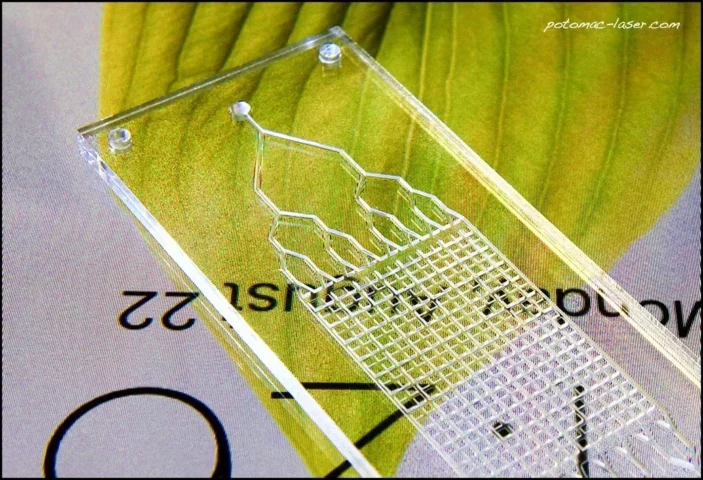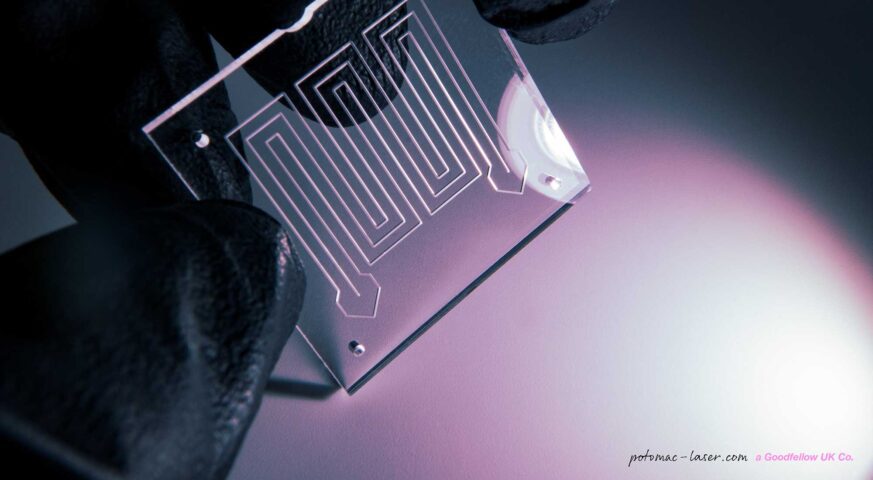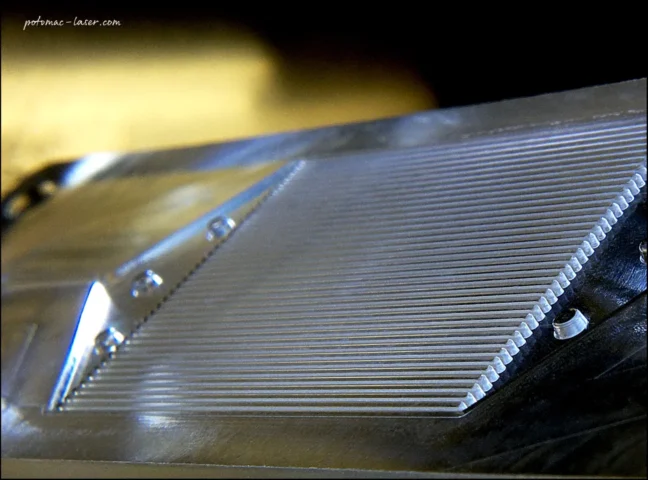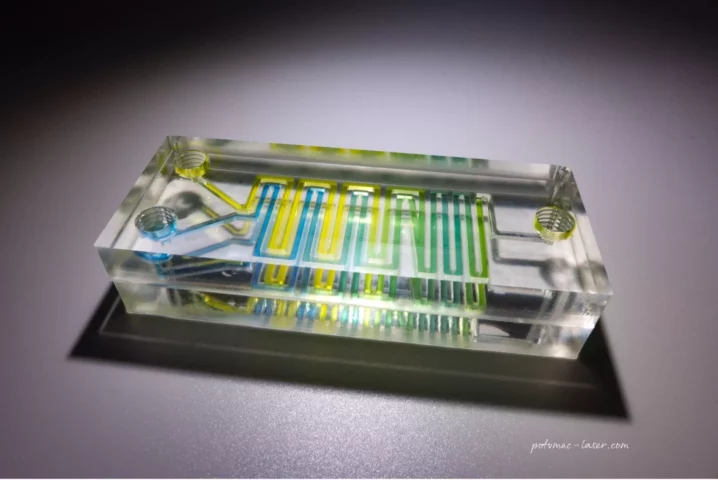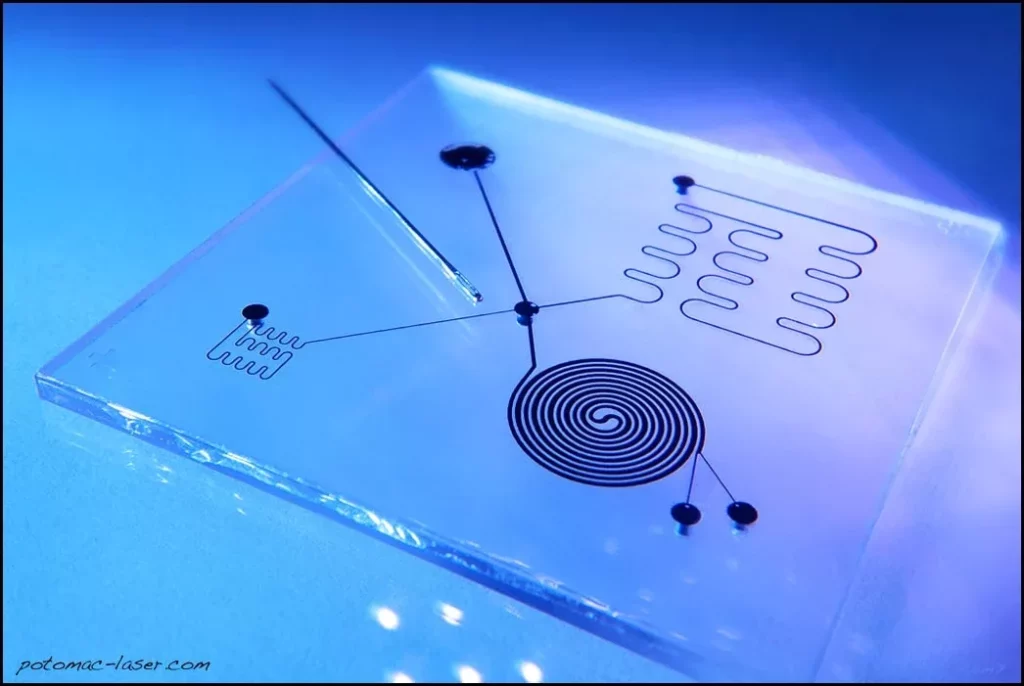
Rapid Fabrication of Microfluidic Devices from Prototyping to Full Scale Production
Potomac’s extensive array of microfabrication tools and technologies has revolutionized the accessibility of microfluidic devices. By harnessing the power of lasers, micro-CNC, hot embossing, and micro-3D printing, we have shattered the longstanding barriers that once hindered microfluidics from widespread adoption. Our commitment is to deliver innovative technologies that accelerate the development process, significantly reduce prototype costs, and provide a tailored customization approach. With a strategy focused on meeting deadlines and achieving target production pricing, we have made microfluidic devices more accessible than ever before
With a focus on speed and efficiency, we initially collaborate with the customer to thoroughly understand their specific requirements and develop a customized manufacturing process for each layer of the microfluidic devices. Depending on the feature sizes, tolerances, and materials required, this may involve a variety of techniques including lasers, hot embossing, injection molding, micro-CNC, among others. We pay particular attention to downstream processes such as bonding, ensuring that each layer is produced in a way that guarantees optimal results during the final assembly. Our approach is tailored to deliver speed without compromising quality, making advanced microfluidics more accessible and practical for our customers.
Our initial step involves a comprehensive evaluation of the microfluidic project to identify the exact manufacturing process required for part fabrication. Depending on the project’s technical complexity and production volume, it will be assigned to a specialized team of experts with deep knowledge in microfabrication. This team will engage in a detailed collaboration with you, focusing on technical specifications such as material properties, dimensional tolerances, and fabrication techniques. They will also ensure alignment with your project’s timelines, budgetary constraints, and scalability requirements. Our commitment is to provide a sophisticated, precise, and efficient pathway to bring your advanced microfluidic designs into reality.
Potomac Photonics Microfluidic Fabrication Toolbox
At Potomac Photonics, we offer a comprehensive suite of microfluidic fabrication technologies designed to meet the diverse needs of our clients. Our state-of-the-art facilities and experienced team enable us to provide customized solutions for a wide range of applications. Explore our Microfluidic Fabrication Toolbox below:
- Micro-CNC Milling
High-precision milling for creating intricate microfluidic channels and structures with tight tolerances and complex geometries. - Soft Lithography
Fabrication of microfluidic devices using elastomeric materials like PDMS, perfect for biological applications and flexible device structures. - Hot Embossing
Replication of microscale features onto thermoplastic substrates through precise temperature and pressure control for high-fidelity patterns. - Laser Ablation
High-precision material removal at the microscale to create complex microfluidic patterns without damaging surrounding areas. - Thin Film Deposition
Application of thin material layers onto substrates to create functional coatings or multi-layer microfluidic structures. - Bonding and Assembly
Advanced techniques for bonding microfluidic device layers, including thermal, solvent, and adhesive bonding methods. - Surface Modification
Tailoring of surface properties through chemical treatments or coatings to enhance device performance and functionality. - Material Processing
Expertise in working with a wide range of materials such as polymers, glass, silicon, metals, and ceramics to meet specific application needs. - Prototyping and Scale-Up
Rapid prototyping services to accelerate development cycles, with capabilities to scale up from small batches to high-volume manufacturing. - Quality Assurance and Metrology
Comprehensive quality control processes and advanced metrology equipment to ensure all device specifications and standards are met.
Our Microfluidic Fabrication Toolbox is designed to provide you with the flexibility and precision needed to bring your innovative ideas to life. Whether you’re in the biomedical field, diagnostics, life sciences, or any industry requiring microscale fluid control, we have the expertise and technology to support your project from concept to production.
Contact us below today to learn how Potomac Photonics can assist with your microfluidic fabrication needs.

